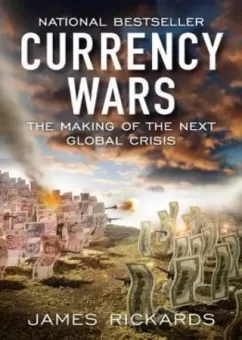Multiple Reserve Currencies
A country’s reserves are something like an individual’s savings account. An individual can have current income from a job and have various forms of debt, yet still maintain some savings for future use or a rainy day. These savings can be invested in stocks and commodities or just left in the bank. A country has the same choices with its reserves. It can use a sovereign wealth fund to invest in stocks or other asset classes, or it can keep a portion in liquid instruments or gold. The liquid instruments can involve bonds denominated in a number of different currencies, each called a reserve currency, because countries use them to invest and diversify their reserves.
Since Bretton Woods in 1944, the dollar has been by far the leading reserve currency; however, it has never been the sole reserve currency. The IMF maintains a global database showing the composition of official reserves, including U.S. dollars, euros, pounds sterling, yen and Swiss francs. Recent data show the U.S. dollar comprising just over 61 percent of identified reserves, while the next largest component, the euro, weighs in at just over 26 percent. The IMF reports a slow but steady decline for the dollar over the last ten years; in 2000 the dollar comprised 71 percent of total identified reserves. This decline in reserve status has been orderly, not precipitous, and is consistent with the expansion of trade between Europe and Asia and within Asia itself.
The continuation of the trend toward a diminished role for the dollar in international trade and the reserve balances begs the question of what happens when the dollar is no longer dominant but is just another reserve currency among several others? What is the tipping point for dollar dominance? Is it 49 percent of total reserves, or is it when the dollar is equivalent to the next largest currency, probably the euro?
Barry Eichengreen is the preeminent scholar on this topic and a leading proponent of the view that a world of multiple reserve currencies awaits. In a series of academic papers and more recent popular books and articles, Eichengreen and his collaborators have shown that the dollar’s role as the leading reserve currency did not arise suddenly in 1944 as the result of Bretton Woods, but was actually achieved as early as the mid-1920s. He has also shown that the role of leading reserve currency shifted between the dollar and pounds sterling, with sterling losing the lead in the 1920s but regaining it after FDR’s dollar devaluation in 1933. More broadly, the evidence suggests that a world of multiple reserve currencies is not only feasible but has occurred already, during the course of Currency War I.
This research has led Eichengreen to the plausible and fairly benign conclusion that a world of multiple reserve currencies, with no single dominant currency, may once again be in prospect, this time with the dollar and euro sharing the spotlight instead of the dollar and sterling. This view also opens the door to further changes over time, with the Chinese yuan eventually joining the dollar and euro in a coleading role.
What is missing in Eichengreen’s optimistic interpretation is the role of a systemic anchor, such as the dollar or gold. As the dollar and sterling were trading places in the 1920s and 1930s, there was never a time when at least one was not anchored to gold. In effect, the dollar and sterling were substitutable because of their simultaneous equivalence to gold. Devaluations did occur, but after each devaluation the anchor was reset. After Bretton Woods, the anchor consisted of the dollar and gold, and since 1971 the anchor has consisted of the dollar as the leading reserve currency. Yet in the postwar world there has always been a reference point. Never before have multiple paper reserve currencies been used with no single anchor. Consequently, the world Eichengreen envisions is a world of reserve currencies adrift. Instead of a single central bank like the Fed abusing its privileges, it will be open season with several central banks invited to do the same at once. In that scenario, there would be no safe harbor reserve currency and markets would be more volatile and unstable.
One disturbing variation on Eichengreen’s optimistic vision consists of regional currency blocs, with local dominance by the dollar, euro and yuan, and possibly the ruble in Russia’s area of influence in Eastern Europe and Central Asia. Such blocs can arise spontaneously according to well-known models of self-organization in complex systems. Regional currency blocs could quickly devolve into regional trading blocs with diminished world trade, undoubtedly the opposite of what the advocates of multiple reserve currencies such as Eichengreen envision.
Eichengreen expects what he calls healthy competition among multiple reserve currencies. He discounts models of unhealthy competition and dysfunction—what economists call a “race to the bottom,” which can arise when leading central banks lock in regional dominance through network effects and simultaneously abuse their reserve status by money printing. The best advice for advocates of the multiple reserve currency model is “Be careful what you wish for.” This is an untested and untried model, absent gold or some single currency anchor. The missing-anchor problem may be one reason why the dollar continues to dominate despite its difficulties.
Pages: 1 2 3 4 5 6 7 8 9 10 11 12 13 14 15 16 17 18 19 20 21 22 23 24 25 26 27 28 29 30 31 32 33 34 35 36 37 38 39 40 41 42 43 44 45 46



